Can New Zealand really go predator free? Wellington shows both the promise and the peril
This article was written by Nikki Macdonald for The Post on 6 September 2025.
Predator Free Wellington is showing birds can boom in cities, but the bigger national vision is at a crossroads as Nikki Macdonald reports.
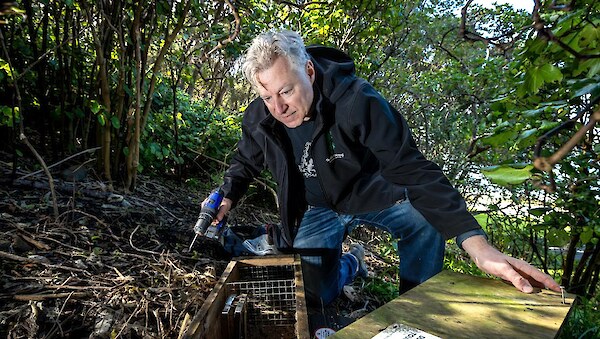 Marcus Hull checking a trap. Photo courtesy Bruce Mackay/The PostWhen Marcus Hull started monitoring an eight-trap line in Wellington’s Worser Bay, he’d catch seven or eight rats and mice every day.
Marcus Hull checking a trap. Photo courtesy Bruce Mackay/The PostWhen Marcus Hull started monitoring an eight-trap line in Wellington’s Worser Bay, he’d catch seven or eight rats and mice every day.
“I was just astounded at how many rats were around, day after day after day. I was like ‘Oh my god, how can it be this many?’… If I left a trap-check for more than 12 hours, I would risk finding just the rat head left, as the rats were eating the rats that were caught in the trap.”
That was back in 2017. When Predator Free Wellington moved in, with poison stations, the rats were wiped out virtually overnight.
Almost two years on from Miramar peninsula being declared predator-free, Hull is one of many volunteers heading out every Sunday to check traps and cameras to ensure it stays that way.
Growing up in bush-belt Khandallah, Hull had possums in his back yard. And when he moved to Seatoun in 1999, tūī sightings were rare.
After the regional council obliterated possums from the peninsula in 2006, the bush bounced back, bringing tūī with it. Now, with zero predators, their throaty chatter is never far away.
“There’s been a massive explosion in birdlife. Sometimes I will see up to 30 tūī at a time, and I often have half a dozen in my pōhutukawa tree. There’s a nesting pair of falcons only a few hundred metres from my house and I hear them every day, swooping … This change is significant for me, because I know we are leaving this part of the world in a better place.”
Hull’s experience illustrates one of four significant changes highlighted by a new report into Predator Free Wellington’s impact – biodiversity, community leadership, innovation and intergenerational change.
But the vision for a predator-free New Zealand by 2050 also faces significant change, with the disestablishment of the company overseeing the project, and a review of the national strategy to rid the country of possums, mustelids and rats.
Rewriting the rulebook
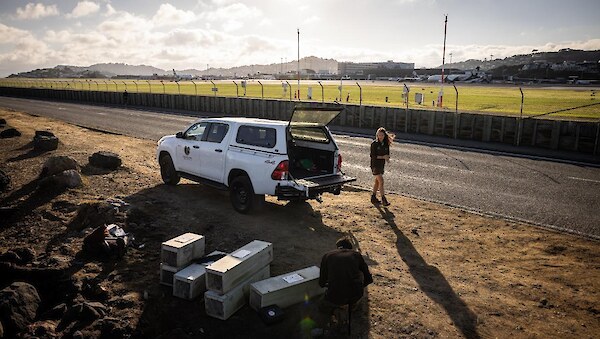 Predator Free Wellington field staff near Wellington Airport“It’s shocking to think now how much we didn’t know back in the beginning,’’ says eradication technical officer Emma Rowell.
Predator Free Wellington field staff near Wellington Airport“It’s shocking to think now how much we didn’t know back in the beginning,’’ says eradication technical officer Emma Rowell.
She joined Predator Free Wellington in January 2019, after doing pest plant and animal eradications on offshore islands with the Department of Conservation (DOC).
“Each season you went back to the same sites, you controlled the same things, and it just felt a bit like grunt work that anyone could do. Whereas this was like a fresh opportunity, that we can create a methodology basically from scratch.”
They started with pest control “best practice” of setting a trap or bait station every 50m. But while that worked for weasels and less people-shy Norway rats, it failed to knock out reclusive ship rats.
“Rats are not distributed evenly. There’s going to be clusters where there’s lots of animals and areas where there’s absolutely none.”
So they learned GIS mapping to plot rat numbers, found out what habitats different species favour (ship rats like steep, ivy-strung escarpments), and figured out ways to make traps more enticing, such as camouflaging the entrance or adding lures.
Rowell reckons they’ve cracked the methodology, and that means clearing the entire nation of ferrets, stoats, weasels, possums and rats should be possible.
“Definitely now I can see a very realistic pathway. I think how much knowledge and experience we’ve gained just in these last seven years is pretty incredible.”
But a Landcare Research insights paper released alongside the review of the national Predator Free 2050 strategy makes for sober reading.
The researchers conclude that, with current technology, nationwide eradication is “plausible” for possums and possibly ferrets but “beyond current capability” for mice, weasels, stoats, feral cats, hedgehogs, Norway rats and ship rats.
“Two key socio-political risks of targeting any mammalian predator for mainland eradication are public disappointment and despondency if eradications fail, and environmental and animal welfare concerns with the extensive use of toxins … A message that communities often receive is that eradication can be achieved by trapping, but there is no evidence for this, especially for stoats, rodents, and perhaps possums.”
Holding the line
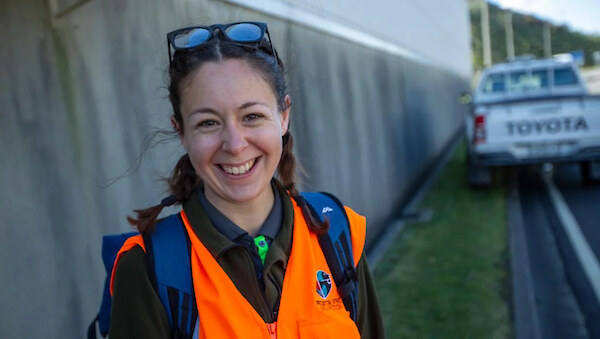 Emma Rowell, one of our Eradication Technical OfficersPredator Free Wellington project director James Willcocks reckons it’s not so much eradication that’s the issue. It’s preventing re-invasion.
Emma Rowell, one of our Eradication Technical OfficersPredator Free Wellington project director James Willcocks reckons it’s not so much eradication that’s the issue. It’s preventing re-invasion.
“How can we tell if something creeps back in behind an area that’s clear? And how can we identify that really, really quickly? So that’s probably the Holy Grail, from my perspective. We know how to get to zero, but being able to hold that in perpetuity, without needing to be looking over our shoulders constantly, I think, is the key piece.”
While Miramar has had the odd fat rodent re-invader since being declared rat-free in November 2023, those individuals have been quickly identified and stamped out.
But in the past few months, the project suffered its first significant breach, which was not picked up soon enough to prevent breeding. And with rats able to spawn eight babies every 3-4 weeks, a population can quickly take hold.
“We had a bit of a flare-up of activity on Miramar, which is disappointing,” Willcocks says.
Constantly trying to trim costs, they had reduced their monitoring camera coverage.
“We started out with a camera every hectare – that was too labour intensive. We thinned it out to one per five hectares, and that broke the system,” Willcocks says. “We’ve got to find the safe space in the middle … That’s just another day at Predator Free Wellington, where it’s like – no-one’s done this before. Let’s figure out how we do it.”
Much like the trapping fine-tuning, they’re now basing camera density on habitat and risk, rather than a one-size-fits-all grid.
While the breach diverted time and energy, Miramar is again predator-free and the project is now deep into Phase 2, with the rolling front-line edging up into Newtown towards the next big challenge – the city centre.
“You take Miramar, plus Phase 2, plus the CBD and you’ve got that genuine proof of concept of doing this at a city scale.”
The big picture
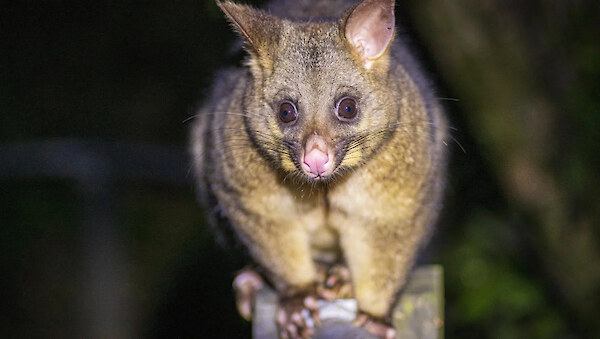 A possum. Photo courtesy Andy MacDonald/Taranaki Daily NewsLaunched in 2016, by then-Prime Minister John Key, the Predator Free 2050 national vision is at a crossroads.
A possum. Photo courtesy Andy MacDonald/Taranaki Daily NewsLaunched in 2016, by then-Prime Minister John Key, the Predator Free 2050 national vision is at a crossroads.
While localised projects such as Predator Free Wellington have already proved roaring successes, the Landcare Research report notes the programme is far from ready for a national push.
“No attempt to roll out the PF2050 programme should be undertaken unless the RD&I (research, development and innovation) phase demonstrates that eradication is feasible on mainland New Zealand for one or more species.”
Of seven 2025 interim goals, only one has been achieved so far. DOC says another four are close, one of which is ridding a major city of possums or mustelids. That’s supposedly Wellington.
Willcocks says those goals were never funded. And while they could have rid the capital of possums, that would have been a major focus change.
“In the development of future goals, we need to make sure they’re adequately resourced.”
The Landcare Research report recommends the PF2050 target species should be expanded to include hedgehogs, feral cats and mice, at least in the research phase, to 2030. Hedgehogs eat eggs of endangered ground-nesting birds and their droppings have been found to contain up to 10 gecko feet; mice munch lizards and small birds; and feral cats kill everything from shore, forest and wetland birds to bats, lizards and tuatara.
There’s also a risk that controlling selected species can create “perverse outcomes”, the Landcare report warns. Rat removal, for example, could cause a mouse explosion that reverses any biodiversity gains.
However, the strategy review instead proposes sticking with the current targets of weasels, ferrets, stoats, rats and possums.
Excluding feral cats is just one recent let-down for Predator Free NZ Trust chief executive Jessi Morgan.
“As soon as you start to control the other predators, you suddenly realise that leaving feral cats in the system is a disaster.”
The second disappointment was last month’s axing of Predator Free 2050 Ltd – the company set up to make the vision reality.
“The disestablishment of the company is a bit of a blow to the mission,” Morgan says.
Shifting responsibility – and funding – instead to DOC carries two risks, she says. The first is that the already thinly stretched department lacks the same laser-focus on the goal.
And the second is that bureaucracy and breakthroughs aren’t natural bedfellows.
“We don’t know how to do it, so we need to be able to try some stuff. We need to be agile, we need to innovate, we need to be adaptive – all these things that government agencies aren’t necessarily set up to do.”
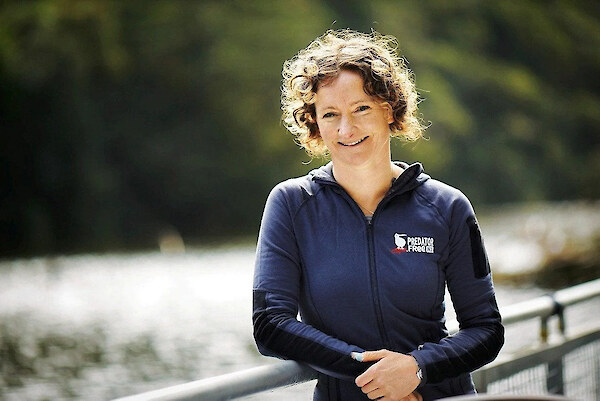 Jessi Morgan, CEO of the Predator Free New Zealand TrustMorgan also says the vision needs secure funding at all levels, from keeping community groups in traps and bait, to resourcing pilot projects such as Predator Free Wellington.
Jessi Morgan, CEO of the Predator Free New Zealand TrustMorgan also says the vision needs secure funding at all levels, from keeping community groups in traps and bait, to resourcing pilot projects such as Predator Free Wellington.
“Funding is obviously a big issue, and quite challenging. In this political environment, we really need government to step up and say ‘Yes, we are really supporting this’.”
Having last year faced a looming $2m funding gap, Predator Free Wellington has mustered enough fundraising and partner support to push that out.
“The next year we’re looking pretty good,” Willcocks says. “Beyond that, we’ve got that re-emerging issue with a funding hole … It’s a really challenging environment, but the signals we’re getting from our foundation supporters is that this is very, very important work.”
While transferring responsibility from PF2050 Ltd to DOC doesn’t change the project’s $500,000 grant funding, Willcocks would like better recognition of the value of banishing predators from an urban environment.
“The bigger question for us is what comes out of the national strategy review, and what the forward investment strategy might look like.”
The Government currently invests $70m a year into predator-free work, including funding for DOC; projects previously managed by PF2050 Ltd; and tourism levy-funded predator free projects.
DOC Predator Free 2050 manager Brent Beaven says the 3400 submissions to the strategy review show Kiwis’ ongoing interest in the project.
Consultation finished on June 30 and the department is still analysing submissions, and will advise the conservation minister later this year.
Beaven says the revised strategy opted not to extend the target species to mice, feral cats and hedgehogs as current knowledge and tools to eradicate them are “less advanced”. Those methods will be investigated further over the next five years.
The decision to exclude feral cats was a key topic for submitters, Beaven says.
“The purpose of consultation was to test this proposed approach and gauge views on the target species. Feedback from the public will inform our advice to the minister.”
Everyone seems to be behind it
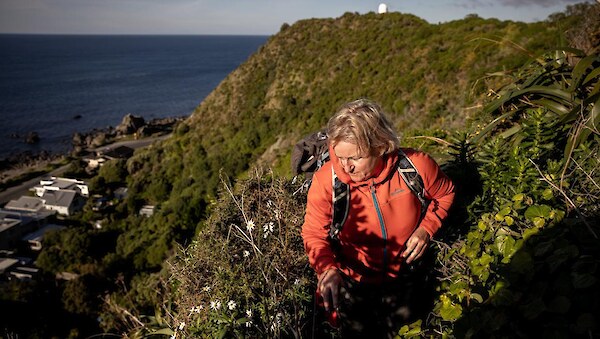 Sue Hope in the hills above Breaker BaySue Hope has seen many community projects come and go. A key person leaves and motivation fizzles.
Sue Hope in the hills above Breaker BaySue Hope has seen many community projects come and go. A key person leaves and motivation fizzles.
So when she volunteered to check traps for Predator Free Miramar way back in 2018, she probably never expected to still be here seven years later.
“This just keeps going. Everyone seems to be behind it. I think it’s the community cohesion - the idea that we’re all doing it together. It doesn’t matter who you are, or where you’re from. Plus people can see the difference – it’s a massive difference in the bird life. It’s crazy.”
Like Hull, the 55-year-old started with her own trapline, at Massey Memorial.
“I liked the fact you’re outside, you’re in the environment. I’d been really unwell with breast cancer, so I just wanted to get back to being healthy … I was on the Miramar Community Trust Board, so I’ve done lots of work in the community from a governance perspective, but not hands-on, where you have your gloves and backpack on and off you go.”
After rats were eliminated, she joined Predator Free Miramar chief Dan Henry’s Sunday re-invasion detection crew, checking traps and cameras for any sign of a breach. In winter she’s not wild about getting out, so scrolls camera images instead.
“I didn’t just want to give money to someone. I actually wanted to participate in something. So that’s what I’ve got out of it. And the bonus is I’ve been able to do it in my backyard and I’ve done it with people, and we’ve got this shared sense of space now.”
It’s that grassroots enthusiasm that makes Morgan believe PF2050 is not a pipe dream.
“We’re showing it can be done on Miramar – everyone thought that was a joke.
“I do still think it’s possible, and I think we have public support for this, but we need to do it properly. We need to focus on it. We can’t do this half-arsed, we actually need to commit to it and keep moving forward, because otherwise we’ll lose public interest.“
Posted: 6 September 2025
